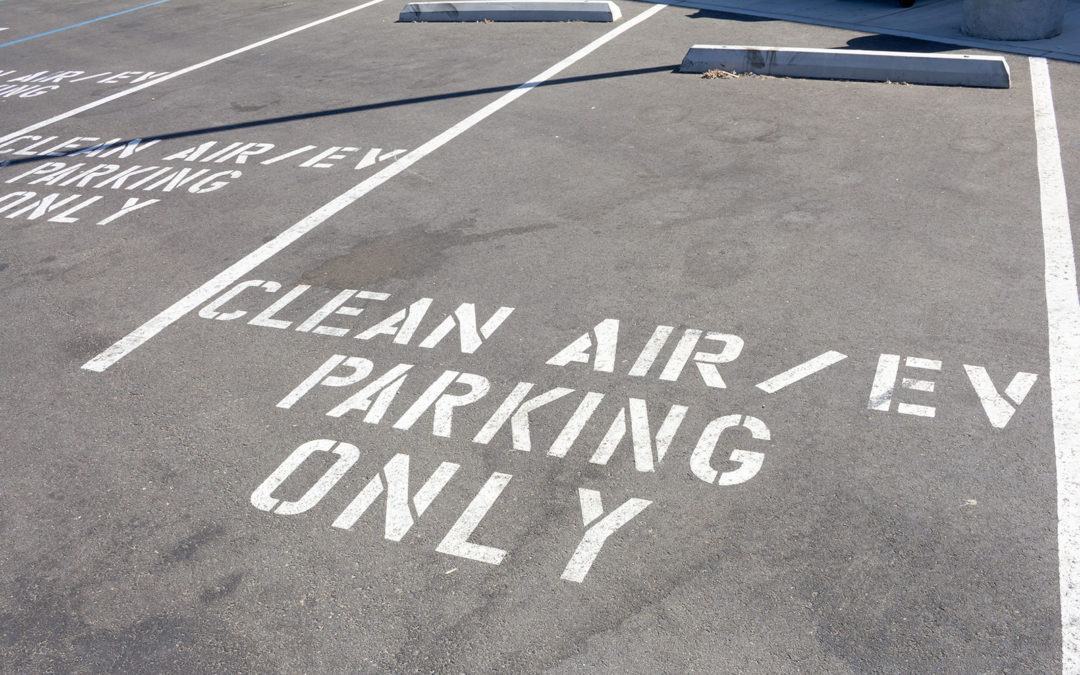Imagine a Wisconsin where everyone drives electric vehicles. Additionally, these cars are all powered by clean energy, like solar and wind. Besides quieter travel and different fueling stations, this vision, if realized, would yield significant economic and health benefits for individuals and communities.
With 100% electric vehicle adoption, $6 billion could stay in local economies, and residents could collectively save $3 billion on fuel.
Those are big numbers! Do Wisconsin businesses and residents really spend that much on fuel? Yes! We spent more than $6 billion on motor gasoline in 2017. A clean powered electric vehicle (EV) fleet would allow us to keep $6 billion in the state economy!
Individuals could also save a lot of money. Right now, Wisconsin electricity prices range from 10¢/kWh to 14¢/kWh. Assuming current EV fuel efficiency at .32 kWh/mile Wisconsin residents could save up to $3 billion by fueling electric vehicles with clean power each year. EV owners can also eliminate oil changes from monthly budgets.

This analysis only looks at passenger vehicle travel. If other forms of non-passenger transportation are included, like trucks and aviation, expenditures on petroleum products in Wisconsin rise to a total of $8.4 billion. Non-passenger travel technologies are still in development, but as they progress Wisconsin will have the opportunity to keep even more money in the state.
100% electric vehicle adoption would result in over $2 billion of avoided health and social impacts.
Conventional internal combustion vehicles emit toxic pollutants like nitrous oxides (NOx), particulate matter (PM), and carbon dioxide (CO2). Non-renewable power plants, like coal and natural gas, emit those same chemicals and more. These pollutants have huge negative impacts on our health like increases in childhood diseases, asthma rates and early mortality rates, which lead to huge economic burdens, as well. If Wisconsin residents employed a 100% renewable energy powered EV fleet, we could save more than $2 billion.
The impact of clean-powered EV adoption on health and the environment is substantial, because pollutants are expensive in both the long and short term. The net loss in agricultural productivity, negative human health impacts, property damages from increased flood risk, and the lost value of ecosystem services from carbon emissions is estimated at $42/ton. Passenger vehicles emit on average 4.6 tons of CO2 per year. With more than 6 million registered passenger vehicles in Wisconsin, that’s a price of over $1.1 billion per year. Additionally, particulate matter and nitrous oxides are even more costly at $380,000/ton and $7,800/ton respectively.
By saving billions in avoided health and social costs, Wisconsin can direct more investments to areas like roads, schools, police and fire protection. Every dollar we save in fuel expenditures and avoided pollution impacts can enrich the lives of Wisconsin residents.
To accommodate 100% clean-power EV use, Wisconsin would need to develop 21 million megawatts-hours (MWh) of new renewable energy .
Wisconsin currently consumes about 70 million MWh of electricity per year. To power this future electric vehicle fleet, Wisconsin would need an additional 21 million MWh, which would increase electricity generation needs by about 30%.

To help illustrate this amount of renewable energy, let’s assume that solar power will supply one-half of the additional 21 million MWh of electricity and wind power would also supply one-half of this amount. Assuming that each new renewable power plant would average 100 MW, we would need to add 52 solar farms and 35 wind farms.
Renewable energy is already one of the fastest growing job categories in the country. Currently, 76,000 Wisconsinites are employed by the renewable energy industry. Wind and solar projects employ research engineers, manufacturers, scientists, construction workers, real estate brokers, and so much more. Studies show that wind projects can create at least 2 jobs/MW per year in construction and manufacturing jobs and up to 1 job/MW in operation and maintenance jobs. The solar industry can create up to 8 jobs/MW per year for construction and manufacturing jobs with up to 2 jobs/MW in operation and maintenance. If Wisconsin employed the renewable energy mix detailed earlier, even a cautious job estimate would be over 250,000 jobs created!
The premise of 100% electric vehicle adoption powered by 100% clean energy highlights a real opportunity for Wisconsin, keeping $6 billion in our local economies and reaping $2 billion in saved social costs, while creating tens of thousands of jobs for Wisconsin residents.

